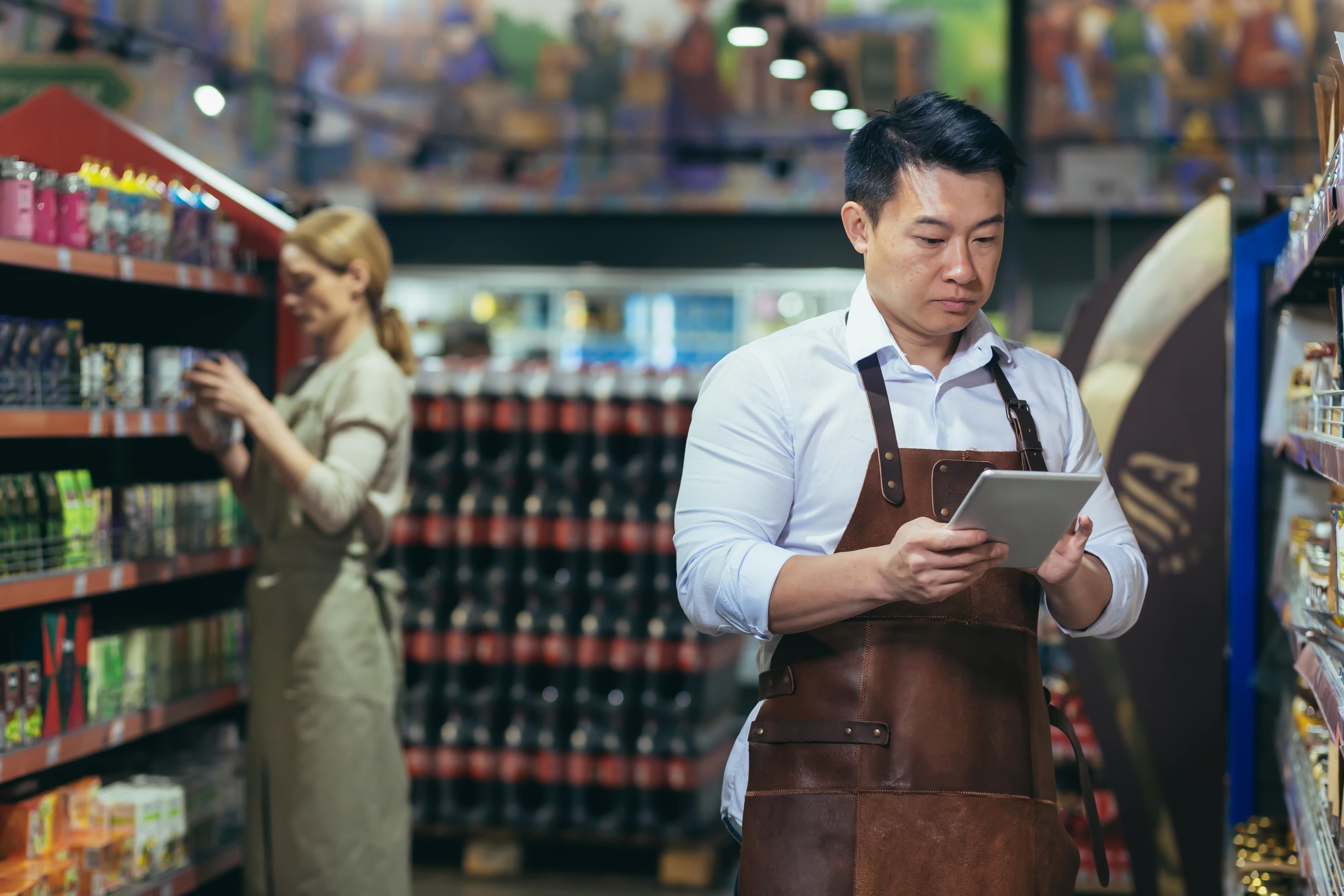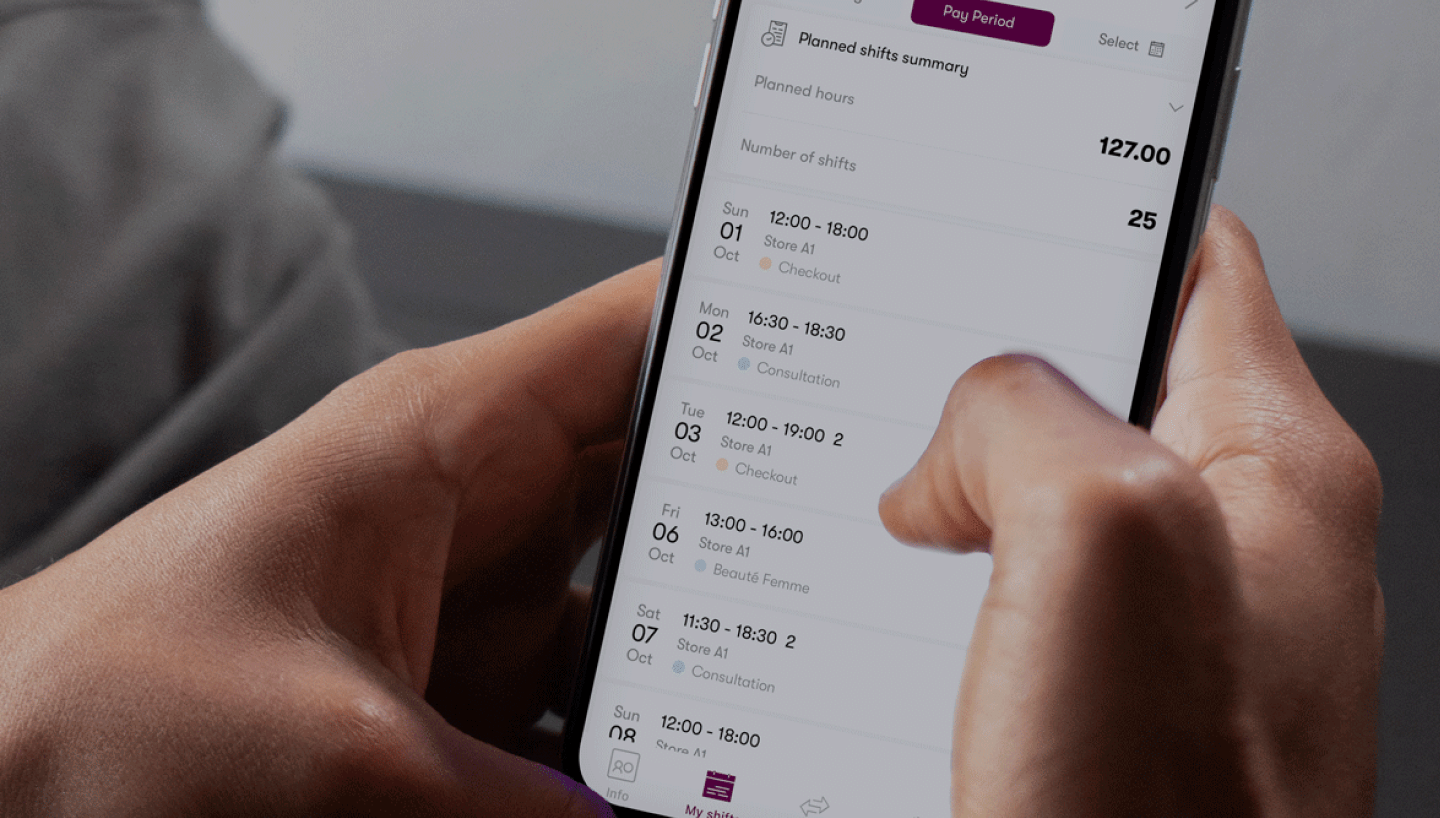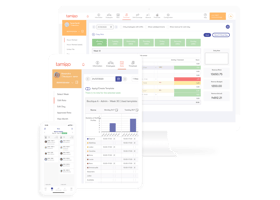Seamless omnichannel experiences, hyper-personalised shopping and more flexibility than ever. Consumers' demands on retailers are currently higher than they have been for a long time. Tech can help retailers make work easier for employees and meet these increased expectations.
Just in time for EuroCIS, the leading trade fair for retail technology, we have a look at the 4 key technology trends that will shape retail in 2024 and beyond.
The future of retail: tech in focus
Imagine you’re a store manager of a retail company. You’ve just digitally scheduled your staff for the coming weeks and step into one of your stores when you observe one of your sales assistants greeting a customer in person. Thanks to planning based on footfall and sales data, you’ve scheduled enough staff to personally look after your customers and offer them a great shopping experience.
The sales assistant picks up his tablet and finds the relevant customer data and the customer's preferences. Armed with this information, he guides the customer through a tailor-made shopping experience.
After making a buying decision, the customer scans the products herself, pays via an app and leaves the store – completely satisfied and without long waiting times. At the same time, the sales figures are updated and show that the sales assistant has met his sales targets for the day.
What only some years ago sounded a bit futuristic, is already a reality today. And in 2024, the retail sector is evolving at an impressive pace. Retail tech has a very special role to play.

Retail technology trends in 2024
In retail, tech trends offer concrete solutions to make employees' work easier and give them the tools they need to feel on top of their work, exceed customer expectations and create the best possible customer and brand experience.
Let's have a closer look at the 4 most important retail tech trends this year:
Retail trend 1: Focus on staff
Employees are the driving force behind the success of any retail business. They play a vital role in creating positive customer experiences and driving in-store sales. Employees who are satisfied, motivated and well-trained work productively and create value for the company.
Better workforce management, efficient HR processes and employee empowerment are crucial to succeed with this. That’s why more and more retailers are relying on the following retail technologies in particular:
- Cloud-based workforce management. Cloud-based workforce management makes it possible to access employee and planning data from anywhere and at any time. This makes a big difference – especially in terms of flexibility, transparency, and efficiency.
The advantage: managers can react quickly to changes, adjust working hours, and optimise staff deployment in real-time and from anywhere.
- Mobile employee apps. By using a workforce management solution with an intuitive mobile app, employees can see their working hours, update availabilities, and communicate easily with their manager.
The benefit: Smooth communication and collaboration between employees and managers, ensuring no information is being lost.
- Real-time data analysis for optimised planning. Nowadays, many solutions enable real-time data analysis, allowing managers to continuously monitor the performance and productivity of their team and adjust their planning accordingly to the chosen KPIs.
The benefit: By analysing relevant sales data, customer behaviour and other key performance indicators, managers can make informed, proactive decisions to optimise staff deployment and avoid bottlenecks.

Retail trend 2: Hyper-personalised shopping experiences
Regardless of age or interests, customers expect tailor-made shopping experiences. A study by the market research company Forrester found that as many as 73% of consumers want to be truly delighted by the companies they shop from. However, only less than a fifth find that they offer them this level of personalisation.
By using artificial intelligence (AI) and machine learning, retailers can create tailored recommendations and offers that are relevant to the customer. Think of product recommendations, promotions and content that are precisely tailored to individual preferences and habits.
You might be interested: How tech is shaping the future of luxury retail
Retail trend 3: Omnichannel and phygital experiences
The days of separate online and offline shopping are over. Today's consumers move seamlessly between the offline and online worlds. 'Phygital' stores bridge the gap between these two.
Imagine virtual and/or interactive fittings and AI-assisted product recommendations on smart shelves.
To be successful in the future, you need to surprise your customers across all platforms with experiences that inspire them and keep them coming back. After all, according to McKinsey & Company, omnichannel customers spend 1.7 times more than customers who only shop via one channel.
One retailer that recognised this early on is the popular outdoor sports brand Salomon:
"We’ve equipped all our points of sale with a digital catalogue to allow consumers to shop for products that are not physically present. In our flagship shops, it’s even possible to have your foot scanned in 3D to find the right shoe models."
Michaël Amsellem, Global Senior Retail Operations Manager, Salomon

Did you know that Salomon also relies on cloud-based workforce management as part of its successful digitalisation strategy? Read more about Salomon's success story here.
Retail trend 4: Advanced analytics
In the highly competitive retail industry, a unified, data-driven approach is crucial for long-term success.
Separate planning processes in areas such as supply chain and workforce planning – known as silo planning – can cause significant problems in retail. Understaffing leads to poor customer service while overstaffing at the wrong time is inefficient and increases labour costs.
By using integrated technologies that link supply chains and workforce planning, you can optimise utilisation and minimise staff turnover. If you link this information with data on customer behaviour – e.g., via mobile apps, social media, or POS systems – you can adapt your product mix and marketing strategies. The result: an increase in sales, a reduction in unnecessary costs and improved customer loyalty.
Want to learn more about how retail tech helps you meet the evolving expectations of employees and customers in 2024 and beyond? Book a free demo and discover how you equip your team with the right tools throughout every workforce management touchpoint!




